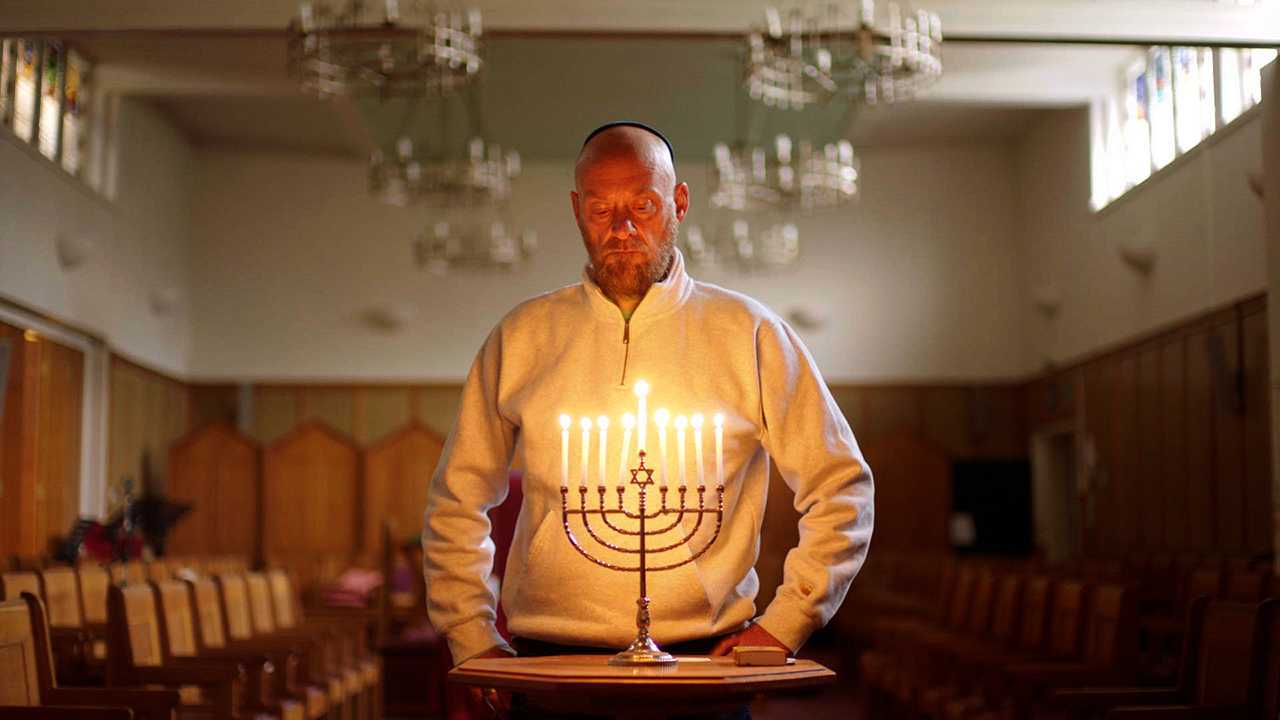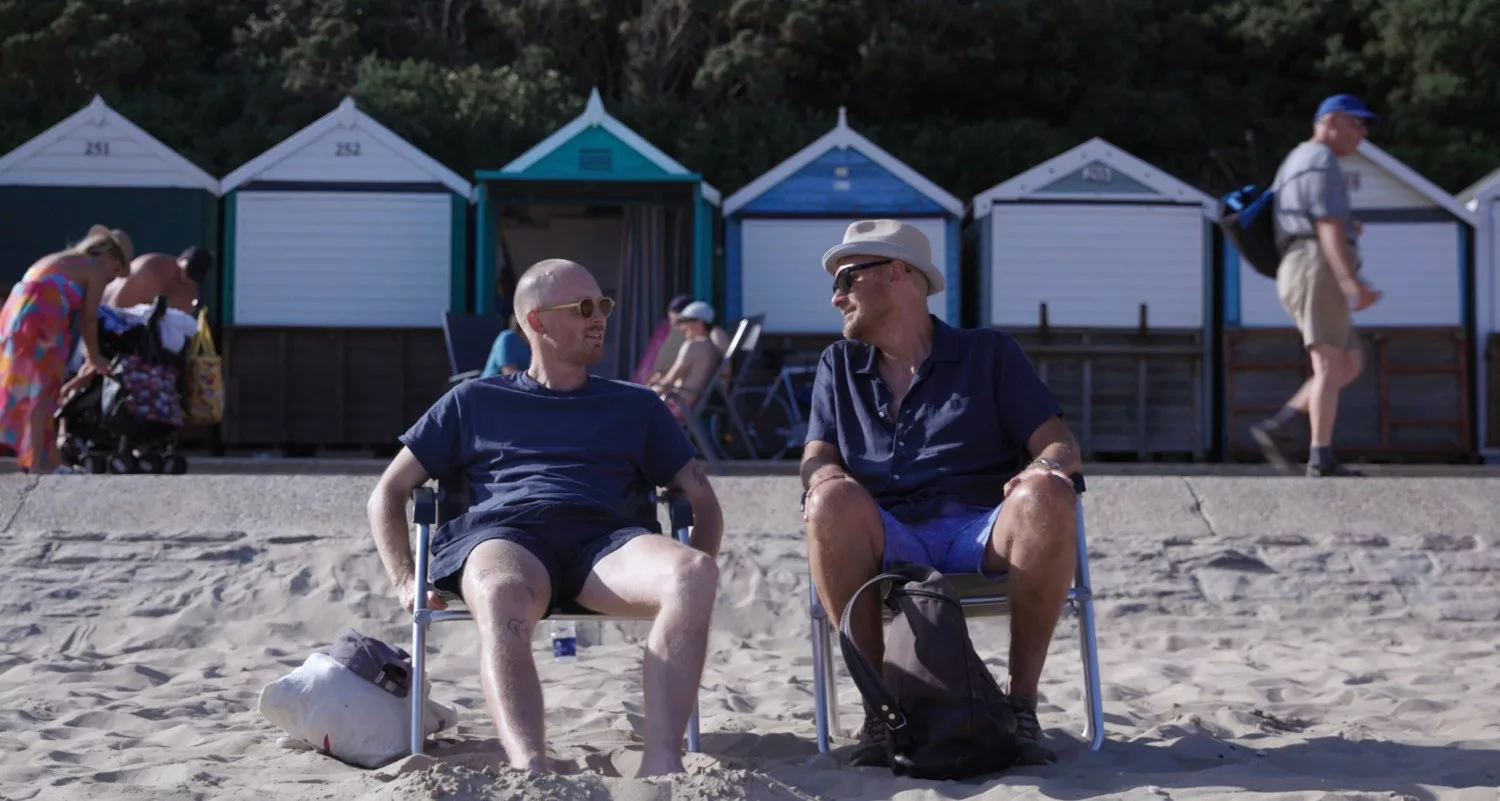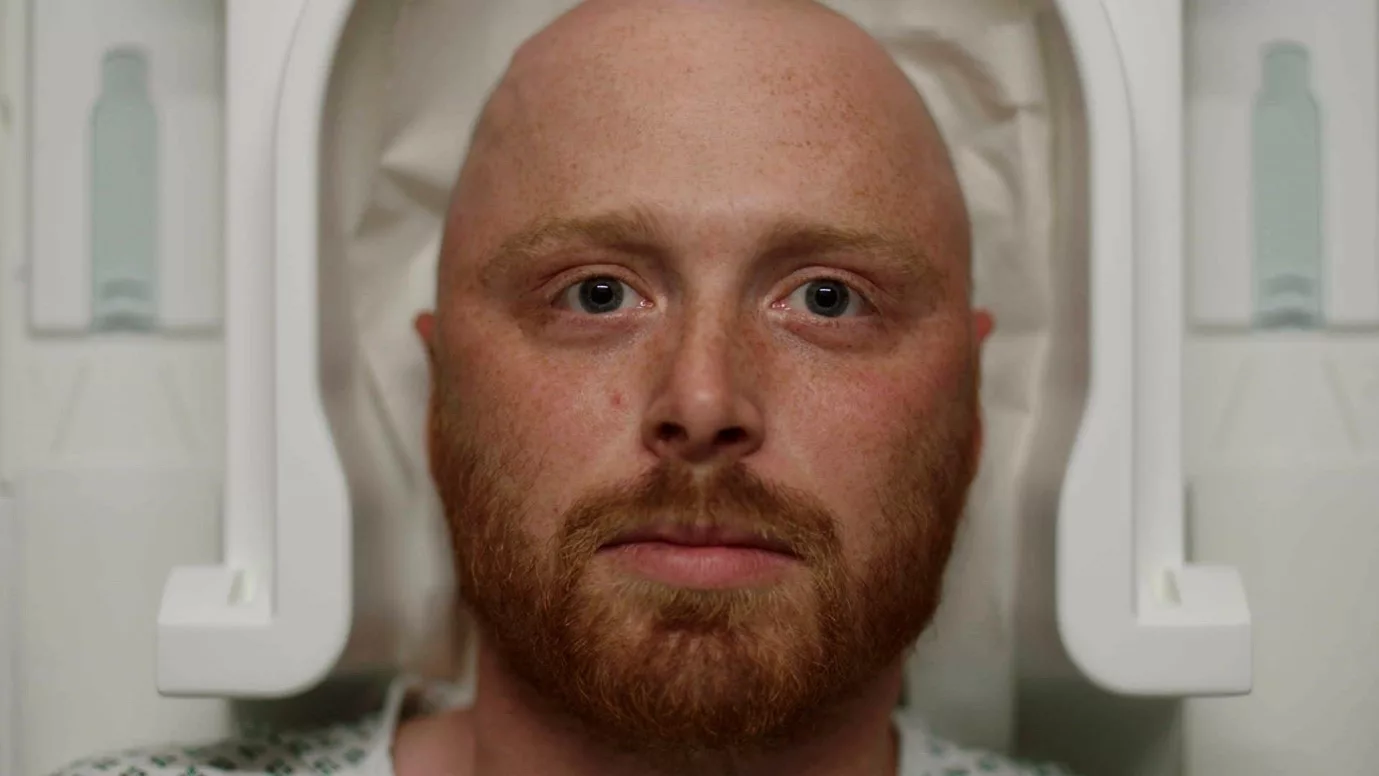At just 24 years old, British filmmaker Kit Vincent received a life-changing diagnosis—an inoperable brain tumor that carried an uncertain prognosis of four to eight years to live. Instead of allowing this news to define the rest of his days, Kit made the brave choice to document how the Terminal news would impact himself and those closest to him. The result is Red Herring, an unflinchingly candid yet warm exploration of family, love, grief, and acceptance in the face of impending loss.
Kit doesn’t shy away from pointing the camera at his own vulnerable thoughts and feelings. But much of the film’s heart focuses on showing how parents and partners each process this new reality in their own distinct ways. His nurse mother struggles to wed her clinical understanding of death with the personal tragedy of her son’s. His once atheist father dramatically recalibrates his spiritual compass. And his live-in girlfriend wavers between supporting Kit’s need to discuss things and wishing to shield herself from reality.
With disarming humor and deep affection for each subject, Kit brings an empathic and comforting presence to their intimate discussions. Conversations have a raw, unvarnished quality reminiscent of trusted confidants rather than a filmmaking project. Throughout medical scans and shifting hopes for the future, their frank yet tender exchanges reveal universal truths about mortality’s capacity both to fracture and strengthen the bonds of family.
Red Herring is among the bravest and most humane portraits of a family united in facing life’s greatest unknown—how to make peace with the inevitability of their beloved son and brother’s passing.
Lawrence’s Journey
When Kit’s diagnosis was first delivered, his father Lawrence’s reaction shocked all those present—his heart simply stopped in the hospital room. Throughout the following years, Lawrence could not escape the guilt of his body giving out just when his son needed support most. His relationship with Kit had always been warm, but this traumatic event brought them even closer as they both learned to process fear and uncertainty together.
Lawrence dove headfirst into seeking spiritual solace, a path that surprised even those close to him. A lifelong atheist, he now embraced Judaism with dedicated study of the Torah and regular attendance at his local synagogue. None of these steps were shallow or half-hearted; Lawrence invested himself fully in his newly found faith. Whether dressed in yarmulkes or pondering the teachings over a solemn prayer, peace seemed to come through ritual and community. With a playful smile, Kit showed support for his father’s quest even if not sharing the same beliefs.
Alongside religion, Lawrence took up other outlets like painting, growing medicinal cannabis, and continually expressing his love and fear for Kit through raw, tearful conversations. His transparency about each turbulent emotion offers viewers an intimate look at grieving processes seldom documented with such tenderness. Though Lawrence’s various tangents in the film sometimes wander, his devotion to living each moment to the fullest with his son remains the profound underlying thread.
Even amidst laughter and celebrations, an undercurrent of sadness colors their interactions. Yet Lawrence’s commitment to appreciating Kit and living truthfully in their present reality makes for surprisingly uplifting and life-affirming moments between father and son. His journey illustrates how confronting mortality with courage, humor, and the support of family can cultivate deeper connections capable of outweighing any dread or pain.
Coming to Terms
As a nurse assisting patients at the end of their lives, one might expect Julie to adeptly handle news of Kit’s terminal diagnosis. Yet facing her own son’s mortality presented challenges unlike any other. While pragmatic about death’s mechanics, emotionally absorbing Kit into that reality seemed insurmountably painful.
Their relationship held more distance than Kit shared with his father. When asking for her participation in his film, Julie coolly deflected by tending garden tasks. Understandably, no parent wants outliving their child, but her detachment frustrated Kit’s attempts to connect over this challenging situation.
Her hesitancy began making sense when revealing a deeply buried part of her past. Adopted as a baby, Julie learned her birth mother succumbed to the very tumor now threatening Kit’s life. Repressed for decades, this added layer of inherited trauma must have amplified fears for her son’s fate. Few realize how adoption’s uncertainties can silently influence those who’ve closed that chapter long ago.
As Lawrence openly explored spiritual questioning, Julie kept her inner world more closed. But in a breakthrough moment, admitting this backstory showed newfound readiness for facing painful emotions. Her honesty visibly moved Kit, closing the distance between them. From there, a warmer portrait emerged of two learning intimacy through candid conversations, not clinical detachment.
Julie’s reluctance to engage at first reflects how private wounds remain stubbornly sealed, even after years have passed. That Kit achieved helping her unlock repressed grief stands as a testament to his gift for connecting souls during hardship. In finding solace together through transparency, their relationship blossomed like few expected amidst circumstances pulling most apart.
Navigating New Waters
Isobel found herself in uncharted territory upon learning of Kit’s diagnosis. Where some dove headlong into processing grief, she opted to keep things light between them. Not that she didn’t care—quite the opposite—but openly grappling with his mortality wasn’t her style.
When Kit insisted on bringing his filmmaking into their most private talks, uncomfortable tensions surfaced. Scenes show her annoyance with questions like “Will you date after?” framed more for viewers than comfort. Understandably, she preferred solving problems together rather than performing them.
Over time, though, Isobel’s reluctant participation showed her commitment to being fully present despite discomfort. When others retreated or obsessed over control, she simply listened without judgment, shoulder to lean on regardless what form support took.
It’s to Kit’s credit; his portrayal included even moments making him look self-centered. Through Isobel’s eyes, we get a sense of how his fixation could push loved ones away when all anyone may want is keeping things normal for as long as fate allows. In letting her frustrations shine through, he captured realism many facing darkness lack courage to show.
While Isobel wished to avoid the elephant in the room, her loyalty never wavered. In small kindnesses like squeezing Kit’s hand during difficult calls or joking together in movies’ lighter scenes, she offered steady harbor as seas grew rougher—love’s greatest gift that asks nothing in return.
Facing the Lens
When Kit set out to document loved ones’ reactions to his diagnosis, becoming the film’s central focus seemed furthest from his mind. But gradually revealing personal struggles proved key to Red Herring’s power.
Early on, conversations found Kit passively recording father Lawrence pouring his heart out. But addressing little of his own fear, conversations felt one-sided. When Lawrence challenged this avoidance, Kit offered only making “an abstract film” as an excuse.
A subtler shift emerged. Discussing dating replacements with irritated girlfriend Isobel, Kit’s directness shone through, though jeopardizing their bond. With candor like this, remaining detached became untenable. Real emotions could only be shown, not merely observed.
By opening up vulnerably near the end, Kit’s depth deepened the film immensely. Confessing terror of death yet greater loneliness facing it alone, tears welled. Yet rather than dwell on darkness, he expressed hoping to leave loved ones “something happy to remember.”
Throughout, Kit maintained steady composition, favoring joy over anguish. Even disclosing real setbacks like stalled treatments, his humor entertained as much as informed. Through smiles and parties, we glimpse how he refused to let illness dictate enjoyment in the precious moments left.
By bravely turning the lens within, Kit transformed Red Herring from a mere family portrait into a profound self-reflection. In honestly facing mortality before our eyes, he reminds us there’s solace in openly cherishing each day as a gift.
An Intimate Portrait
Red Herring achieves a profoundly intimate feel through Kit’s self-filming approach. We’re drawn right into everyday scenes as a fly on the wall. From playful banter over breakfast to raw conversations in living rooms, it’s like we’re unseen yet among loved ones.
The film gains touching insight through this direct access. In a moment alone, Kit confesses deepest fears with candid honesty. We feel sorrow to share such private struggles, yet grateful for this vulnerable peek beneath bravado shown others.
Structure provides a neat narrative framework amid challenging subjects. Central are routine scans offering fleeting hopes but also cold realism checks. Gathering as a concerned unit each time heightens impacts, their fates feeling intertwined.
Throughout, we witness individual grieving processes uniquely aided or hindered. Lawrence finds solace exploring faith, yet closing off causes rifts. Meanwhile, Kit gradually comes to terms through exacting his creative passions.
Ultimately, this portrays a family’s resilience and spirit in facing life’s hardest truths. Love transcends even death’s divide as Kit ensures a legacy of joy through film. Grief met with gratitude for time together reminds what truly matters—not material things but bonded hearts and memories that outlive all else.
With subtlety and soul, Red Herring reveals profound life lessons under its simple surface. How embracing our fragility connects us beyond parting, and in facing fear together finds humanity’s greatest strength.
Facing Death With Courage and Creativity
Red Herring undoubtedly succeeds in its goal of starting important discussions around mortality. By opening his unique situation and family to our view, Kit Vincent has done a great public service. Few feel comfortable speaking of death, instead preferring to pretend at immortality. Yet in acknowledging life’s fragility also comes acknowledgment of its beauty.
Vincent demonstrates extraordinary talent, bravery, and heart in crafting such a personal film. Not all could handle with such grace the task of articulating their own demise. Through his lens, we find life’s profound truths aren’t reserved solely for the healthy but for all willing to embrace existence’s fleeting nature. The laughs, tears, and tender talks stay long in memory, reminders to cherish each moment.
While his prospects were grim, Vincent chose optimism, community, and legacy over despair. Red Herring stands as a role model for transforming even death’s shadow into light. Where some might isolate themselves, he fostered closeness—and leaves behind a gift that feels both universal yet made just for us. When our own times come, perhaps we too can face going with such creative courage, love, and wisdom as shown here through one man’s extraordinary, yet typical, human story.
The Review
Red Herring
Red Herring offers an intimate and impactful look at facing terminal illness through empathy, honesty, and dark humor. Director Kit Vincent bravely invites us into his personal journey, reminding us to cherish loved ones and life itself. While grappling with complex family dynamics and his own mortality, Vincent perseveres in creating a poignant cinematic legacy. His directorial debut proves both heartbreakingly human and profoundly moving.
PROS
- Intimate, raw access to a family facing terminal illness
- Inspiring bravery and creativity of Vincent in making the film
- Darkly humorous yet emotionally impactful tone
- Starting important discussions about mortality and family dynamics
CONS
- Not fully exploring certain family dynamics like Vincent's siblings
- Could have gone deeper into examining individual grieving processes.
- Occasionally drifts from the core narrative with lengthy scenes





















































Discussion about this post